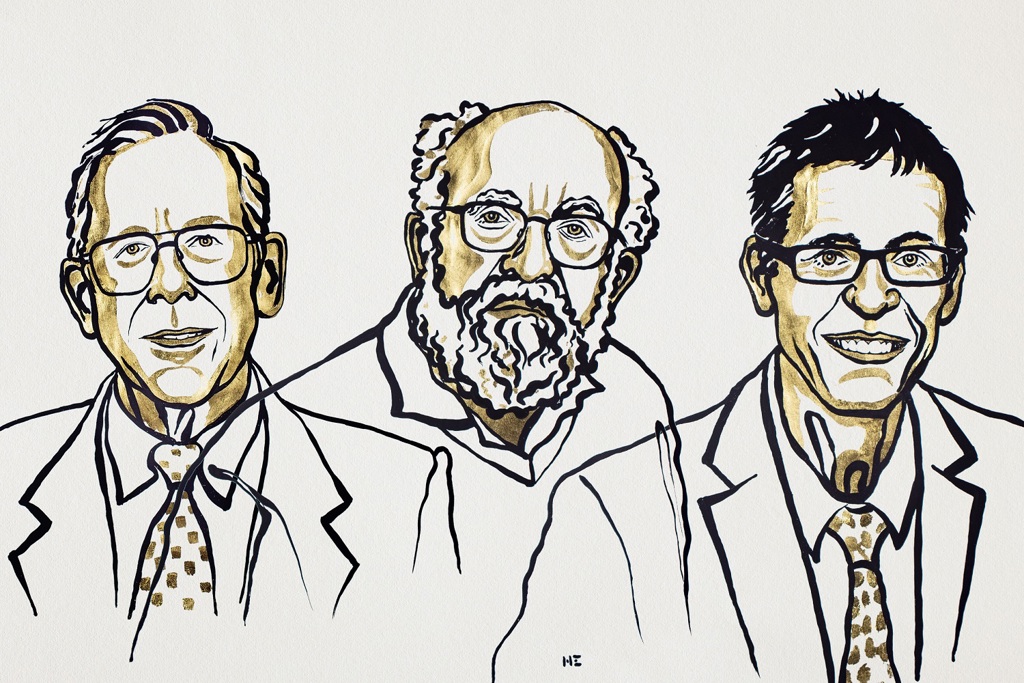About
08 October 2019
James Peebles, Michel Mayor and Didier Queloz Awarded 2019 Nobel Prize in Physics
Optical fiber technology contributes to award-winning research on the evolution of the universe and Earth’s place in the cosmos
WASHINGTON — The Nobel Prize in physics was awarded today to three scientists -- James Peebles, Michel Mayor and Didier Queloz -- for their contributions in deepening our knowledge of the universe.
James Peebles, professor at University of Princeton, U.S.A., receives one half of the prize for his insights into physical cosmology, which helped lay the foundation for our understanding of the birth, evolution, and composition of the universe. Michel Mayor, professor at the University of Geneva, Switzerland and Didier Queloz, professor at the University of Geneva, Switzerland, and the University of Cambridge, U.K., share the other half of the prize for the first discovery of a planet outside our solar system, an exoplanet, orbiting the solar-type star 51 Pegasi. Their planetary detection relied on a revolutionary spectrometer, which harnessed the power of optical fibers to achieve unprecedented sensitivity and stability.

Caption: 2019 Nobel Laureates in physics James Peebles, Michel Mayor and Didier Queloz
Credit: Copyright © Nobel Media 2019. Illustration: Niklas Elmehed.
“Today the science community celebrates the accomplishments of this year’s Nobel Laureates: James Peebles, Michel Mayor and Didier Queloz,” said Elizabeth Rogan, CEO, The Optical Society. “The OSA board and membership applaud their remarkable achievements, which have helped us understand the vast nature of the universe and our place in the cosmos. Their discoveries highlight the impact of optics on fundamental research across the physical sciences.”
To detect the first exoplanet around a solar-type star, Mayor and Queloz relied on one of the fundamentals of optics – the Doppler shift of the wavelength of light emanating from the star 51 Pegasi. Key to this discovery were revolutionary improvements in high-resolution spectrometers, optical instruments that analyze the various wavelengths of light from cosmic objects. Prior to their work, most astronomical spectrometers were integrated into the telescopes themselves. This configuration, however, lacked precise temperature control and instrument stability, thwarting efforts to tease out the data indicating the presence of orbiting planets. Mayor and Queloz overcame this hurdle with a revolutionary spectrometer design that relied on optical fibers to transfer the light received from the telescope to a much more stable and temperature-controlled instrument where the subtle shifts in wavelength could be detected.
“Peebles, Mayor and Queloz have transformed our ideas about the cosmos and launched a new era of discovery that may one day uncover worlds not unlike our own,” Rogan noted.
As a star and an orbiting planet interact gravitationally, the subtle tugs from a massive Jupiter-like planet move the star back and forth, though this shift is staggeringly small. Were it not for the high-precision optics and spectrometers, these small shifts could not have been detected. For this particular observation, the researchers used the Haute-Provence Observatory in France to carefully study the faint but telltale changes in light from the star. This technique, known as radial-velocity detection, has become a cornerstone of planet detection. Along with other techniques and using space-based observatories, scientists have now detected more than 4,000 planets outside our solar system.
About The Optical Society
The Optical Society (OSA) is dedicated to promoting the generation, application, archiving, and dissemination of knowledge in optics and photonics worldwide. Founded in 1916, it is the leading organization for scientists, engineers, business professionals, students, and others interested in the science of light. OSA’s renowned publications, meetings, online resources, and in-person activities fuel discoveries, shape real-life applications and accelerate scientific, technical, and educational achievement.
Media Contact
